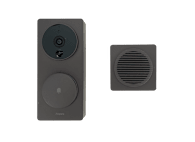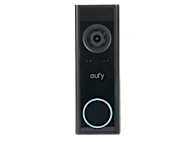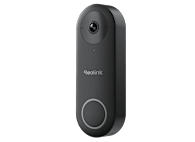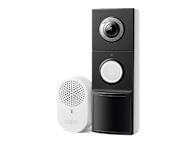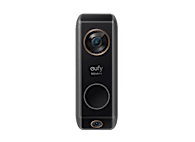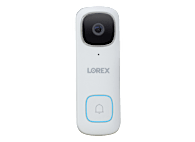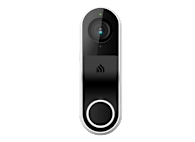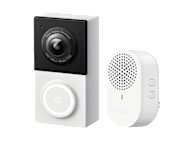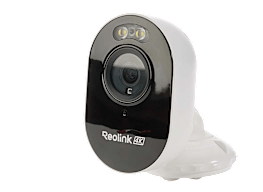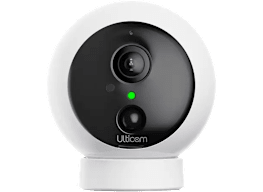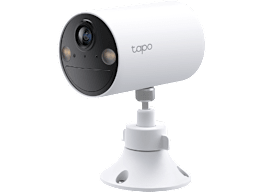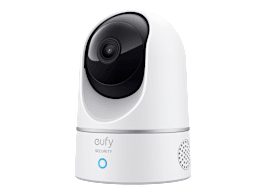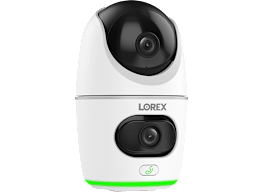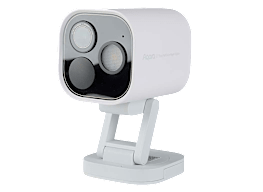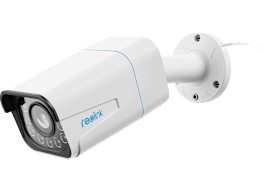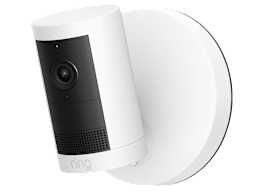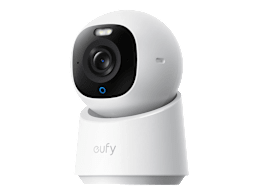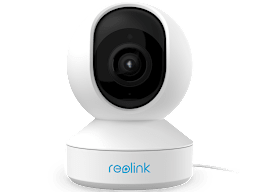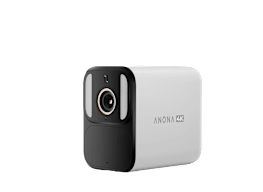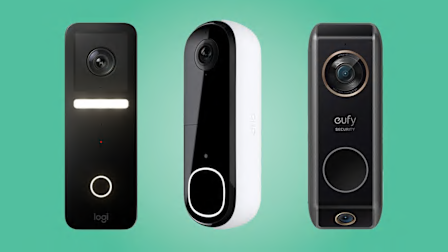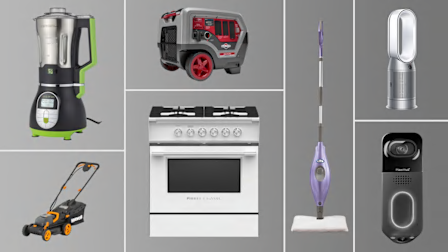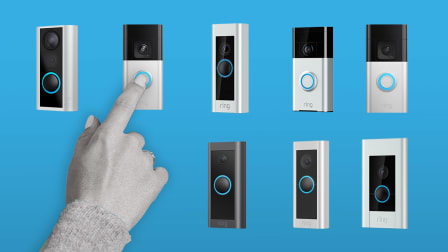Best Video Doorbell Cameras Without a Subscription
These highly rated doorbells from Aqara, Eufy, Lorex, Reolink, and TP-Link store recordings locally, which can keep them private and save you money
When you shop through retailer links on our site, we may earn affiliate commissions. 100% of the fees we collect are used to support our nonprofit mission. Learn more.
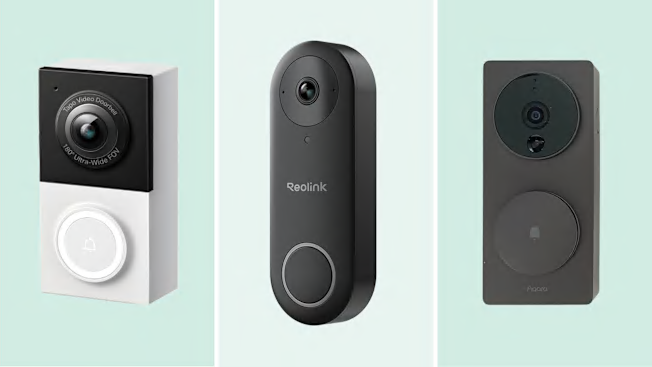
Amazon’s many Ring doorbells dominate the doorbell camera market, and several receive a passing grade in our ratings, but they do have one drawback: You need a subscription to save recordings and access features like person alerts. The fees—from $5 to $20 per month—add up, costing more than the actual doorbell after just a few years. The math is similar for any doorbell camera that has a subscription. There’s a potential privacy issue, too: The manufacturer has control over the video, which is stored on its servers.
When you consider inflation and the fact that Ring and some other camera brands may share your video footage without your consent, you might want to look for alternatives.
Below, you’ll find the best doorbell cameras without a subscription from our ratings, broken out by power source. Wireless models run on batteries, while wired models connect to your home’s low-voltage doorbell wiring. Both types of doorbells use WiFi for internet connectivity. The lists, which are in alphabetical order, include video doorbells from Aqara, Eufy, Lorex, Reolink, and TP-Link.
All of the doorbells store footage locally and perform well in our tests, and many of them outperform Ring doorbells. We also highlight which smart alerts these doorbells provide and whether they offer an optional subscription if you want to store your video remotely. For more options and shopping advice, check out our complete video doorbell camera ratings of over 50 models and our home security camera buying guide.
Best Wireless Video Doorbell Cameras Without a Subscription
Smart alerts: Faces only
Optional storage subscription: Yes, via Apple or Aqara
The Aqara Smart Video Doorbell G4 is an all-around great performer in our lab tests, receiving an excellent score for response time (how quickly it sends alerts and loads live video feeds), a strong score for its many included smart features, and decent scores for video quality, data privacy, and data security.
The doorbell can run off six AA batteries or be connected to low-voltage doorbell wiring for power, but it can’t ring your home’s existing chime. Instead, it comes with a wireless plug-in chime in the box, which is where you plug in the microSD card.
This Aqara doorbell offers local (and free) facial recognition, as well as multiple options for video storage. You can use Aqara’s cloud video storage (you get seven rolling days of recording for free, but more requires a paid subscription), or store footage locally on up to a 512-gigabyte microSD card (sold separately). If it’s hardwired for power, you can even record 24/7 video on the microSD card. Apple users can also opt for Apple HomeKit Secure Video to store footage in iCloud with end-to-end encryption, but this requires a paid iCloud+ subscription.
Smart alerts: People only
Optional storage subscription: Yes
The Eufy Video Doorbell C31 is a solid, relatively inexpensive battery-powered video doorbell with a 2K resolution camera that has above-par video quality and excellent response times. It also has very good data security, but just so-so data privacy. It only musters a middling rating for smart features in CR’s tests, however, as it’s limited to basic person and motion detection.
The C31 features a quick-release battery that makes it easy to recharge, but hardwiring it to your existing doorbell wiring enables continuous power, 24/7 recording, and 5-second pre-roll footage from the moment someone approaches or rings the doorbell. The downside to enabling those features is that you’ll have to bypass your home’s existing chime. But you can pair it with Eufy’s add-on chime ($40) if you still need audible alerts throughout your home.
Once visitors ring the bell, you can get smartphone notifications that allow you to jump right into the live feed and greet visitors by voice, or trigger preset responses. The doorbell is compatible with Amazon Alexa and Google Home. You can store recordings entirely locally with up to a 128-gigabyte microSD card, no subscription required. The C31 supports Eufy’s Cloud Storage plans for online backups, but you can also get the optional HomeBase S380 add-on that supports up to 16 terabytes of local storage, which is especially nice if you have several Eufy security products.
Smart alerts: People, packages, vehicles
Optional storage subscription: Yes
The Reolink Smart 2K Dual-Band (Wireless) is equipped with a 2048 x 2048 resolution camera, offering wide head-to-toe coverage of your front door area. Despite its HDR- and night vision-capable sensor, it only earns a middling score for video quality in CR’s tests. But it has excellent response times and a very good set of smart features that don’t require monthly fees. Those include people, package, and vehicle detection, plus compatibility with Amazon Alexa and Google Home. You can also use preset responses if you don’t want to chat with visitors using the two-way intercom. Its data security score sits near the top of our rankings, but its data privacy is subpar.
This doorbell camera can last up to 5 months per charge on its built-in 7,000mAh battery, according to Reolink, and you can hardwire it to your existing doorbell wiring for continuous power and to ring wired mechanical chimes. (It’s also compatible with Reolink’s WiFi chime.) It accepts up to a 256-gigabyte microSD card for local storage, and if you require more, you can use Reolink’s Home Hub device (which can double as a chime) for up to 1 terabyte of added storage, or up to 16 terabytes with a supported network video recorder. Reolink also offers paid cloud storage plans.
Smart alerts: People, packages, vehicles
Optional storage subscription: Yes
The TP-Link Tapo D225’s 2K camera has just passable video quality in our tests, but this wireless doorbell tops the charts for response times and smart features. It also has very good data security, and its middling data privacy is a bit stronger than even the higher-rated TP-Link Tapo D130, a wired alternative featured below.
TP-Link says the Tapo D225’s rechargeable 10,000mAh battery can last up to 8 months per charge, but you can also hardwire it to use your existing chime and record footage 24/7. It has people, package, and vehicle detection, plus an ultrawide 180-degree field of view that offers head-to-toe coverage. It even has a built-in spotlight with configurable brightness levels that enables color night vision. You can use a microSD card (up to 512 gigabytes in size) for local storage, or upgrade to Tapo Care Premium to store clips in the cloud for up to 30 days. The Tapo D225 works with both Amazon Alexa and Google Home.
Best Wired Video Doorbell Cameras Without a Subscription
Smart alerts: Packages, people, and faces
Optional storage subscription: Yes
The Eufy Video Doorbell (Wired) S330 is one of a few video doorbells with two cameras, one pointed straight out to spot visitors (or intruders) and one pointed down to keep an eye on package deliveries. In our lab tests, it receives strong scores for video quality, data security, and response time for alerts and loading live feeds. It offers a decent amount of smart features, and its data privacy is midlevel, which is actually better than many competing doorbells.
In addition to its two cameras, this Eufy features high dynamic range (HDR) for more vivid video, compatibility with Amazon Alexa and Google Home, activity zones (to receive alerts from important areas near your home and block out false alerts from sidewalks and busy streets), 3-second video previews (to show what happened before the camera detected motion), facial recognition, person detection, and package detection.
This doorbell features 8 gigabytes of built-in memory to store footage, but the company also offers cloud video storage subscriptions. As its name suggests, the Eufy Video Doorbell (Wired) S330 requires low-voltage doorbell wiring for power and can ring your home’s existing chime. It also comes with a wireless plug-in chime in the box.
Smart alerts: People only
Optional storage subscription: No
The Lorex 2K QHD B451AJD-E WiFi Video Doorbell offers performance on a par with some of the more popular doorbell brands. In our tests, this Lorex doorbell earns strong ratings for video quality and data security, and middle-of-the-road scores in the rest of our tests. Its smart features include activity zones, person detection, color night vision, and voice and app control via Amazon Alexa and Google Home.
This Lorex model stores footage locally on a 32-gigabyte microSD card that comes with the doorbell. If you want to store even more footage, the doorbell supports up to a 256-gigabyte microSD card. It also requires low-voltage doorbell wiring for power and can ring your home’s existing doorbell chime.
Smart alerts: People only
Optional storage subscription: Yes
The TP-Link Kasa Smart KD110 is a great video doorbell for the money, with a very good rating for data security, fast response times, decent video quality, and a good number of smart features. Its only noticeable flaw is its lackluster data privacy, but that’s not uncommon for this product category. This TP-Link model features activity zones, compatibility with Amazon Alexa and Google Home, person detection, and local video storage using a microSD card (sold separately). It requires low-voltage doorbell wiring for power, but it can’t ring your home’s existing chime. Instead, it comes with a wireless plug-in chime in the box.
Smart alerts: Packages, people, pets, and vehicles
Optional storage subscription: Yes
One of the smallest (and least expensive) doorbell cameras you can buy, the TP-Link Tapo D130 offers a bunch of features without a subscription. They include 24/7 recording with local video storage on a microSD card (up to 512 gigabytes, sold separately), AI object recognition (for people, vehicles, packages, and pets), activity zones, and color night vision. In our tests, it receives strong scores across the board, with high scores for response time and its many included smart features. Its only weak spot is data privacy, but that’s common among video doorbells. This TP-Link model requires low-voltage doorbell wiring for power, but it can’t ring your home’s existing doorbell chime. Instead, it comes with a wireless plug-in chime in the box.
Pros and Cons of Doorbells Without a Subscription
There are plenty of highly rated video doorbells without a subscription. Instead of storing footage in the cloud, these doorbells store video locally, usually on either a microSD card or their internal memory. This frees you from paying a monthly fee and gives you more control over your recordings. Some of these doorbells offer optional subscriptions if you ever change your mind and want to store your footage in the cloud for extra protection.
Like security cameras without a subscription, the main downside to doorbells that forgo them is that many lack intelligent object recognition of people, animals, vehicles, packages, and faces. That’s because object recognition often happens on the company’s servers rather than in the doorbell itself. Many doorbell camera makers, including Ring, have been using these AI-driven features to entice consumers into paying for a subscription. But there are still plenty of doorbell cameras without a subscription that will offer at least one of these intelligent features (usually person detection) for no additional charge.
How CR Tests Video Doorbell Cameras
Our engineers put doorbell cameras through several tests. Among other characteristics, the tests reveal how quickly a video doorbell sends alerts to your smartphone when it detects motion, how long the doorbell takes to load a live video feed of a visitor in its smartphone app, video quality under daylight and nighttime lighting conditions, and smart features (such as person detection and voice control via digital assistants). We also evaluate 70 factors related to each product’s privacy practices and data security.
Last year we updated our testing methodology to reflect changes in the technology.
Doorbell cameras have become faster at loading videos and live feeds since we started testing them in 2017, so we’ve adjusted our response time test to reflect those improvements and push manufacturers to do even better. We no longer factor in smart features that require a subscription into our smart features score. We also now place greater emphasis on our data security and response time tests to help you avoid purchasing a video doorbell that’s slower or more susceptible to security problems than its competitors.
For more information on our doorbell camera testing process, see our home security camera buying guide.

















